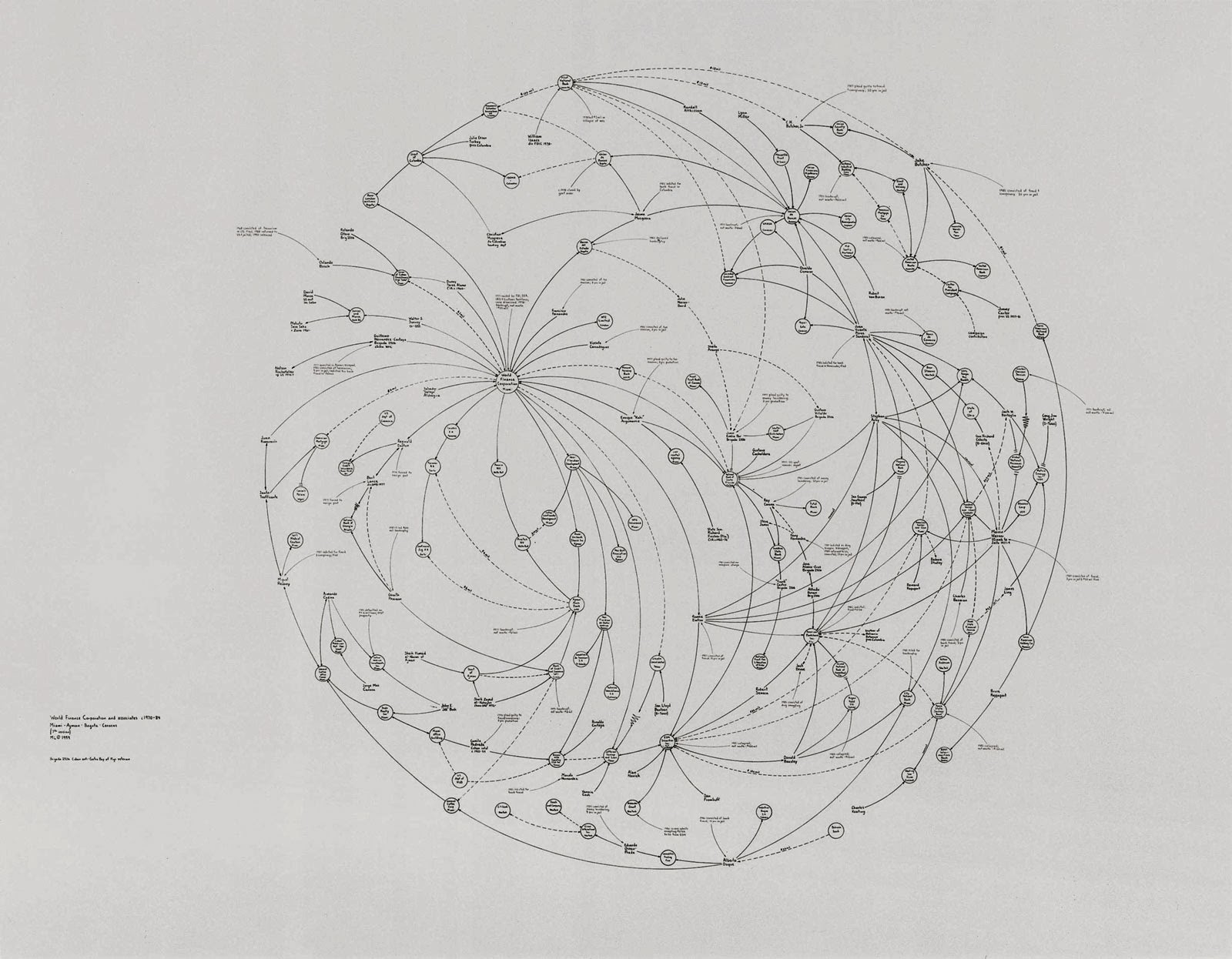Mark Lombardi, 48, an Artist Who Was Inspired by Scandals
http://www.francescofranchi.com/graphic-literature
By ROBERTA SMITH
Published: March 25, 2000
Mark Lombardi, an artist whose elegant, minutely
detailed diagrams of political and financial scandals brought a
distinctive voice to late Conceptualism, was found hanged in his loft in
Williamsburg, Brooklyn, on Wednesday evening, the police said. He was
48. A spokesman for the 90th Precinct in Williamsburg said that a autopsy had been ordered by the medical examiner.
As an artist, Mr. Lombardi was an unusual case: a late bloomer who developed his mature style after the age of 40, but who was experiencing the rapid ascent of a younger artist. One of his large drawings, an airy composition of small circles and crisscrossing arced lines that resembled rose windows or fanciful architectural rendering, is included in the ''Greater New York'' exhibition at P.S. 1 in Long Island City.
As an artist, Mr. Lombardi was an unusual case: a late bloomer who developed his mature style after the age of 40, but who was experiencing the rapid ascent of a younger artist. One of his large drawings, an airy composition of small circles and crisscrossing arced lines that resembled rose windows or fanciful architectural rendering, is included in the ''Greater New York'' exhibition at P.S. 1 in Long Island City.
http://www.aurelscheibler.com/exhibitions/shadowexistence-1245967200?works&ssc=1,26
Mr. Lombardi, who was born in Syracuse in 1951, received a bachelor's degree in art history from Syracuse University. After graduating from college he moved to Houston, where he worked briefly as an assistant curator at the Museum of Contemporary Art. Mr. Lombardi ran a small gallery while making abstract paintings on the side. He began making his drawings in 1993, inspired by a doodled diagram he had made while talking on the phone to a banker friend about the savings and loan scandal. Reading several newspapers a day, he culled his information entirely from published sources, keeping track of the articles with a card file that eventually held over 12,000 cards. Mr. Lombardi began exhibiting his drawings in Houston in 1995. He came to wider attention in a group show at the Drawing Center in SoHo in 1997. He moved to New York and had his first solo show, ''Silent Partners,'' in 1998 at Pierogi 2000, a gallery in Williamsburg. His second show, ''Vicious Circles,'' was at the Devon Golden Gallery in Chelsea in 1999.
http://www.nytimes.com/2000/03/25/arts/mark-lombardi-48-an-artist-who-was-inspired-by-scandals.html
http://www.flickr.com/photos/happyfamousartists/5533439294/
Mark Lombardi's work is fascinating. The combination of enticing subject matter (conspiracies and scandals) and visual organization make these drawings a mysterious adventure. Looking at them is a lot like reading a murder mystery because his compositions pull your eyes to each individual lot of information, slowly piecing together the conclusion of the piece. The simplicity of the lines and concise information makes the subject matter easy to follow and allows your imagination to run wild.
Lombardi's work is valuable to my 2D course because he provides a great example of communicating information simply but beautifully. He uses composition and line to tell a story and he adds colour to create drama.



the second picture is by german artist jorinde vogt. (she actually uses a similar process, but is more using subjective assumptions or vague abstraction and relations as a base for her drawings)
ReplyDelete